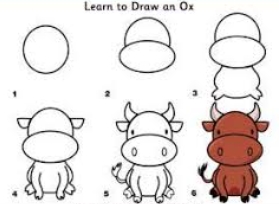Unlocking Creativity: How Kids Learn to Draw and Express Themselves
Drawing as a Form of Self-Expression
Drawing is one of the earliest forms of self-expression that children engage in. From a young age, kids pick up crayons and markers to create colorful scribbles and shapes on paper, expressing their thoughts and feelings in a visual way.
Encouraging Imagination and Creativity
Drawing allows children to explore their imaginations and develop their creativity. By creating their own worlds and characters on paper, kids can unleash their inner thoughts and emotions in a unique and personal way.
Building Fine Motor Skills
Drawing helps kids develop their fine motor skills, as they learn to control their hands and fingers to create precise lines and shapes on paper. This can also help improve hand-eye coordination and dexterity in young children.
Boosting Self-Confidence
When children see their drawings come to life on paper, it can boost their self-confidence and self-esteem. Praise and encouragement from caregivers and teachers can further reinforce their belief in their own abilities and spur them to continue exploring their creativity.
Encouraging Experimentation and Risk-Taking
Drawing encourages children to experiment with different materials, techniques, and styles, pushing them to take risks and try new things. Through trial and error, kids learn what works and what doesn’t, building resilience and problem-solving skills along the way.
Fostering Communication Skills
Drawing can also help kids improve their communication skills, as they learn to convey their thoughts and ideas visually. This can be especially beneficial for children who may have difficulty expressing themselves verbally, allowing them to communicate in a more comfortable and creative way.
In conclusion, drawing is a powerful tool for unlocking creativity in children, allowing them to express themselves, build skills, and boost their confidence. By encouraging kids to draw and explore their imaginations, caregivers and teachers can help foster a lifelong love of creativity and self-expression in young minds.

